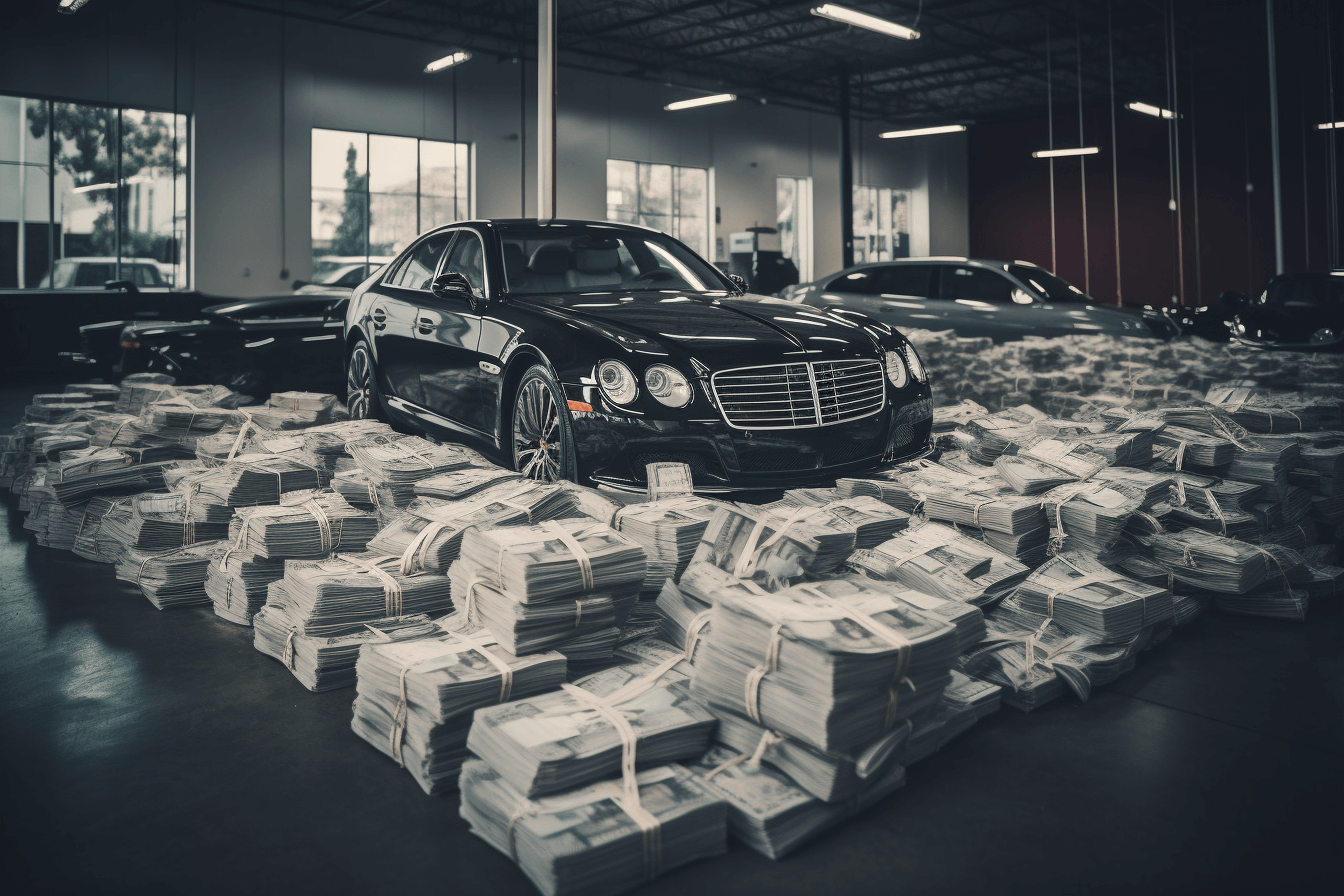How Do Car Dealerships Make Money
When negotiating with car dealers, you will usually run across one that complains about not making any money on the deal.
They'll try to guilt you into paying a higher price, but don't pay attention to the whining. I'm going to reveal how new car dealers really make money, and why you should never really feel sorry for them (most make nearly a million dollars in profit per year). Used car dealers also take advantage of many of these profit centers.
If you get a great deal and simply focus on the price of the car, you may not think the dealer is making much money, but when you factor in all the ways a dealer can make money - a $10,000 profit is possible off of just one sale!.
Of course, that large a profit is not typical, but most dealers do make the bulk of their profit in areas other than the actual sale of the vehicle. Think about that next time a dealer is whining about not making any profit.

Financing
Most dealers don't make the bulk of their profits on the sale of a new car. The big profit usually comes through arranging car loans, selling add-ons, and making money on your trade-in.
Dealers can easily make a profit of $3,000 just through the financing alone (see: How Dealers Make Money on Financing). Basically, dealerships work with third-party lenders and also the manufacturer's lending arm to offer financing options to customers. The dealership earns a commission for every loan they secure, which can add up to thousands of dollars. The commissions often come as marked up interest rates on your loan.
The few times they don't make money on the financing is when the manufacturer offers 0% apr deals.
Add-Ons
The dealership will likely offer you various add-ons, such as extended warranties, gap insurance, or other accessories. These add-ons can really increase the dealership's profit margin. For example, an extended warranty may cost the dealership $1,000, but they may sell it to you for $2,000, earning them a profit of $1,000.
Add-ons typically add $750 to $2,000 in additional profit per sale
Trade-Ins
If you're trading in your old car at a dealership, you won't be getting the best deal. Dealerships will often offer you less than the car is worth so they can make a profit when they resell the car. For example, if your car is worth $10,000, the dealership may offer you $8,000. They'll then clean up the car, make any necessary repairs, and sell it for a decent profit - anywhere from $1,000 to $5,000.
Service and Parts
Dealerships also make money through their service and parts departments. When you bring your car in for maintenance or repairs, the dealership charges you for the labor and parts. They may also try to sell you additional services or upgrades for your car, such as a new air filter or a brake service. Over the life of the vehicle, these additional services can add up to thousands of dollars in profit for the dealership.
Markup on New Cars
Historically, dealers would not make much profit on the sale of a new car. That's when cars would sell for much less than MSRP. In our recent market however, dealers have been selling new cars at close to MSRP, allowing them to make a significant portion of their profit through the markup from the wholesale price. When a dealership buys a car from the manufacturer, they pay invoice price, which is lower than the MSRP (manufacturer's suggested retail price). The dealership then adds their markup, which can range from a few hundred to several thousand dollars.
When demand is higher than supply, dealers will oftentimes add "Additional Dealer Markup", which is basically a bogus fee on top of the MSRP. I've seen additonal markups of more than $10,000 on very popular vehicles.
You can minimize this profit by browsing my Car Deals section and seeing which vehicles offer the best incentives - for example Best Toyota Deals, Best Jeep Deals, etc.
Holdback and Manufacturer Incentives
Car dealerships also receive a "holdback" from the manufacturer, which is a percentage of the invoice price of the vehicle. This holdback is essentially a reimbursement for the cost of financing the inventory.
Most people assume that dealers pay for all their vehicles and have a bunch of money tied up in their inventory. This is false. The vast majority of dealers take out loans to build their inventory and are essentially "renting" the vehicles. Most manufacturer's provide this financing, known as "floorplan", and that's not all - they also reinburse dealers for this cost through a kickback known as holdback (usually 1 - 3% of the invoice price of the vehicle).
A typical dealer may pay $350 per month to finance each vehicle. If it takes two months to sell, their cost is $700 - but the holdback amount usually covers this. If a dealer sells the vehicle in less than a month, they will make a tidy profit simply on the holdback amount.
Dealerships also receive manufacturer-to-dealer incentives, which are cash incentives from the manufacturer for selling certain models or reaching certain sales goals. These incentives can add up to thousands of dollars per car sold.

Each week, I'll keep you up-to-date on the latest car deals and news that might affect your purchase. This includes...
- Best Rebates, Incentives, and Lease Deals
- Latest Car Buying Scams and Tricks
- The Best & Worst Time to Buy a Car
- Which Cars You Should Avoid
About The Author
 Gregg Fidan is the founder of RealCarTips. After being ripped off on his first car purchase, he devoted several years to figuring out the best ways to avoid scams and negotiate
the best car deals. He has written hundreds of articles on the subject of car buying and taught thousands of car shoppers how to get the best deals.
Gregg Fidan is the founder of RealCarTips. After being ripped off on his first car purchase, he devoted several years to figuring out the best ways to avoid scams and negotiate
the best car deals. He has written hundreds of articles on the subject of car buying and taught thousands of car shoppers how to get the best deals.




Got a Question About This Article?